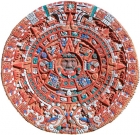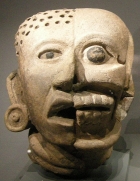Central & South America
The Incas and the Aztecs are well established curriculum topics. The Maya are now also an optional unit of study. In this section you will find podcasts articles and guides to help develop your knowledge and plan to teach this world study.
Sort by:
Date (Newest first) | Title A-Z
Show:
All |
Articles |
Podcasts |
Multipage Articles
-

Aztec Experience
ArticleClick to view -

Confounding expectation at Key Stage 3: flower-songs from an indigenous empire
ArticleClick to view -

Culture Shock: The Arrival of the Conquistadores in Aztec Mexico
ArticleClick to view -

Curriculum Planning: World Study
ArticleClick to view -

Curriculum Planning: which non-European society might we offer at school?
ArticleClick to view -

Linking history and science: how climate affected settlement
ArticleClick to view -

Long ago or far away: the Global perspective
ArticleClick to view -

Scheme of Work: Maya
ArticleClick to view -

Studying the Maya
ArticleClick to view -

Teaching history and geography together in a meaningful way
ArticleClick to view -

The Maya: a 4,000-year-old civilisation in the Americas
ArticleClick to view -

Using indigenous and traditional stories to teach for climate and ecological action
ArticleClick to view -

What can you tell about the Maya from a Spanish soldier?
ArticleClick to view

